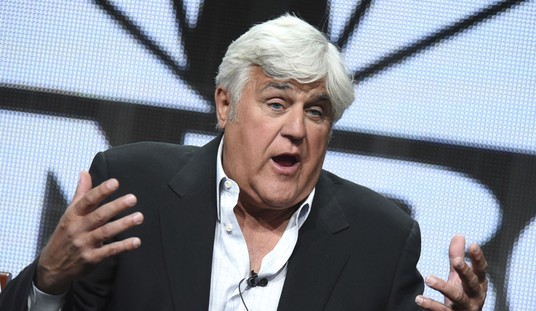In the last hour of RedState’s election night coverage live stream, I congratulated the Washington establishment on successfully defending the status quo from the so-called Red Wave. The message of Tuesday night is that little has changed about the political culture of America. The country remains deeply divided.
Unfortunately for America, this has a policy meaning that will affect the lives of ordinary folk. There was no strong message to shift away from the lackluster policies driving the United States into an economic recession. Washington’s elites were assured that they have no fear there are Americans with pitchforks waiting outside the Beltway to threaten that members of Congress might need to again hide in their offices lest they be held accountable to their constituencies. The election was a puddle of tears of lost opportunity.
It was lost in part because the Democrats perfectly executed a defense of the establishment. But they also had help from the Republicans. I believe a series of strategic flaws in how the election was approached by the GOP had a lot to do with turning what was a strong sentiment in Florida into a lackluster performance in the rest of the country.
This was an election that depended heavily on crossover votes to swing the outcomes of many races. It was known all along by the campaign research that these crossover votes had to come from disenfranchised Democrats who felt abandoned by their party, and pragmatic Libertarians willing to see a Republican win as the lesser of two evils over the purity of their core principles. Neither of these two elements was activated in sufficient numbers to create the kind of crossover voting that Republicans were counting on happening to make a Red Wave possible.
Muddled Messaging
My observation on this is that Republican messaging to this vital voter bloc was muddled. Unlike Democrats, who spend a great deal of time aligning the messaging of their candidates to present a simple to recognize choice for voters, Republican candidates tend to present themselves individually. This means that an undecided voter must put extra time and effort into getting to know the candidate. Call me jaded if you like, but in an age where the reality is that most people are low-information voters, this can often make deciding to vote for a Republican far more trouble than it is worth to a crossover voter. The swing votes will either not vote at all, or default back to just checking the Democrat or Libertarian candidate on the ballot. Either way, the Republican candidate loses.
Don’t get me wrong. I’ve worked productively with politicians of all stripes. Democrat politicians are as individualistic as their Republican counterparts. But their party discipline is to spout the party line first and then add their individualism as a modifier in their presentation. Republicans present their individualism first and, quite honestly, don’t have a coordinated party line to offer to the public. You’re not going to get large numbers of uncommitted votes to come your way with that kind of packaging.
Echo Chambering
Leading up to the 2022 election, I made the effort to do extended interviews with candidates. I noticed that many Republican candidates spent a lot of time messaging their core constituencies. Many focused on the “get the vote out” strategy for the election. But some did concern themselves with the reality that they didn’t stand a chance without significant crossover.
Campaigns did a lot of research about the sentiment of the uncommitted voters that they also wanted to vote for them on Election Day. They hoped those weak sentiments would translate into votes. I did not believe it was going to be the case because these insights tended to be isolated to campaigns in contrast to the consistent drumbeat messaging by the Democrats and their big media allies.
What I know about sales and marketing is that unless you go through an extraordinary effort to target the undecided to buy into your message your look-to-book conversion rate is going to be bad. I just never saw the Republican party beating the drum with messaging aimed at crossover voters. Such passiveness in politics does mean you lose the election.
One of the flaws of Republican candidacies in the 2022 election that I saw as I interviewed candidates was a concern their most opinionated core voters would remain loyal if they went off message. There was a great deal of hesitancy to make these core constituencies even a little bit uncomfortable to sell their candidacies to swing voters.
In contrast, Democrat candidates would say outrageous things not giving a hoot about how orphan Democrats felt about their statements. Indeed, I would say that a key Democratic Party strategy in the 2022 election was to get their core base to vote and to suppress their orphaned base convincing them to stay home instead of voting across party lines. It’s a great strategy to stop a “Red Wave” in its tracks. The tale of the tape says that that strategy worked well everywhere except Florida, where messaging across party lines paid off.
Bad Cross-Selling
One glaring strategy flaw I saw from the Republican faction was failing to make a solid effort to appeal to pro-choice Republicans, Democrats, and Libertarians to get them to come out and vote for Republican candidates.
I’m of the mind to be very cold and tactical about this. There was plenty of wiggle room to acknowledge the concerns of pro-life Republicans as the modifier underneath to a political message welcoming pro-choice Americans who saw value in first-trimester choice and medical necessity abortion policies. A message that welcomed these votes as equal partners in a future U.S. policy debate on these matters after the election would have created a welcome mat for these crossover voters.
What I saw instead was that pro-choice Republicans felt like they were orphaned by their party in this aspect of the debate and felt that they could not speak out openly. The effect of this was that the constituency within the Republican Party that would have served as the goodwill ambassadors to Democrats and Libertarians fell silent. All that the crossover voters would see because of this was that they were not welcome either. In the pragmatism of marketing, you just gave that voter base away.
The data point in the 2022 election that proves this point was Measure 1 in California. The California abortion referendum garnered 70% of the vote on Election Day. Democrats are only 47% of registered voters in California. Republicans are a little over 24% of registered voters, the remainder are independents. When you factor in that a portion of registered Democrats are orphaned Democrats, that is a lot of people in the crossover voter category that voted for Measure 1.
Those were the very people that Republican candidate Mark Meuser told me were vital to his bid to prevail over incumbent Alex Padilla for the US Senate seat in California. The fact that Meuser still garnered 40% of votes in a 25% registered Republican state losing to Padilla says that there was a red bump in California, just not enough to overcome Padilla’s almost 20% advantage.
My instinct is that this gap could have been closer; but I think, despite his research, as an individual candidate, he could not deliver a message to California’s potential crossover voters that would seal the deal for them in this election. My assessment is that it was not the fault of the Meuser campaign, but the fault of his party for not creating an overarching message that would sell to these voters in the face of a Democratic party effort to convince them not to vote for the opposition.
What should have happened from a party discipline standpoint was that there should have been very strong messaging across the board by the Republican Party that both views were welcome by the party going into the 2022 election. Whereas the Democrats wanted to make this issue an up-and-down vote on every candidate in the election, the Republicans failed to counter this by creating organized messaging to tell the American people that a republican controlled Congress would be very willing to listen to both sides in 2023. My assessment of this blunder is that the Democrats didn’t have to do anything to turn this into a divisive issue to suppress crossover votes. The Republicans did the work for them.
Quite honestly, I’m suspicious it was deliberate. Republican political strategists are not dummies. This calculus of figuring out how to activate crossover voters is not hard. It’s basic political science. The only conclusion I can come to is that party strategists did not want a strong crossover vote. I’m particularly curious to look at the behavior of the GOP in the next couple of years and ask if the contribution of the Republicans to the Establishment cause was to allow pro-life rhetoric to drive away crossover voters from supporting the party candidates whose chances for election depended on voter crossover. This strategy of managing down the threat looks to have worked well on November 8, hence my congratulations to the DC Establishment team at the end of the RedState coverage live stream.
Inside/Outside
The other glaring artifact of the Republican Party in the 2022 election was the failure of the party to clearly identify itself to crossover voters as the party of the “outsiders” against the Washington establishment seeking to bring balance back to the Beltway.
Orphaned Democrats and upset Libertarians are known to share disappointment over many of the policies by government elites that are impacting their quality of life. The “it’s the economy” concern is universal for Americans regardless of party affiliation. If you want a real Red Wave, that wave had to be one that galvanized people in a quest to restore the concerns of the people inside every hall of the federal government in Washington D.C.
But the Republican Party is itself clearly conflicted. Only part of the Republican party has the outsider sentiment. The other part enjoys being part of the Beltway establishment and does not want to give up power to the unwashed. This internal conflict is there for everyone to see. And quite honestly, you can’t really expect crossover voters to jump in the middle over a wrestling match.
The bottom line for the crossover voters is that if control of the Republican Party belongs to the establishment wing, there’s absolutely no reason for any Democrat or Libertarian to vote with them. It just means that there are orphaned Republicans wandering the wilderness with them. But if control of the outsider wing belongs to a controversial figure, that’s a hard sell too. And that’s one of the fatal flaws that I saw in why a Red Wave wasn’t going to work in the 2022 election.
Inconvenient Lightning Rod
Like him or not, Donald Trump continues to be the lightning rod charismatic figure of the outsider wing of the Republican Party. He is the blood enemy of the insider wing of the Republican Party, the Democratic Party, the DC professionals, and the intellectual elitists of academia and media; none of whom care what ordinary people think. This “coalition of the resistance” all fear that he might stage a second coming.
I don’t believe for an instant that the aura of Trump hanging over US politics is over. Not because of him as an individual, but because of the idealism he is the vessel of. No one has replaced Donald Trump as the voice of ordinary America. This is too bad because that means there is no figurehead able to galvanize the orphaned and crossover base. There is a massive political army assembled to neuter the man. And it will attack anyone who comes along who might substitute for him.
Don’t get me wrong, I do give Trump credit as being one of the most insightful Americans we have. He is competent and capable of seeing US policy and strategy in a complex world with better clarity than many other players on the American political scene. He remains the only candidate I saw in 2016 that never ran out of ideas on stage; and I watched a lot of them get up and talk, listening carefully for that moment of pause that signaled they’d just run out of steam. Anyone that tells you that Trump doesn’t have what it takes to lead is in denial of reality. That’s what makes him the most dangerous threat to the establishment in the arena. His greatest weakness is he loves to be the center of attention. And that’s simply not enough to overcome so many foes massed inside the castle keep of the District of Columbia.
It’s not that the desire for such a charismatic figure to lead the cause of ordinary America isn’t there. That was clearly the undercurrent of the hopes of a Red Wave in 2022. But no one so far has appeared on the scene to replace the charisma of “The Donald” with an even larger figure like Ronald Reagan or John Kennedy. Remember that these men, in their time, also made the establishment nervous as they changed the rules of the game. Personally, I’d like to see someone show up not just by himself or herself, but with a proper team that I can trust.
I’m still waiting. The realist in me doesn’t believe that there will be a Red Wave – make that an American Wave – until that person arrives on the scene and inspires America with a constructive approach to digging up the skeletons in the Washington Mall.
Divide and Conquer
In the days of Philip of Macedonia and the age of the Roman Empire, one of the preferred tools of statecraft to keep the provincials in line was to create artificial squabbles so they would attack each other and not be a threat to the imperial throne.
The primary season starts now. The main goal of the DC Establishment for the next two years is to do whatever it takes to make sure that the people of the provinces remain divided and unable to form a coalition to wrestle power from them in the 2024 election. For the Republican wing of that Establishment, I believe that means making sure that Donald Trump and Ron DeSantis become embroiled in a hopeless struggle of animus, and that any other charismatic figure that comes on the scene is immediately vilified by the cooperative media.
Bear this in mind in the months ahead.













Join the conversation as a VIP Member